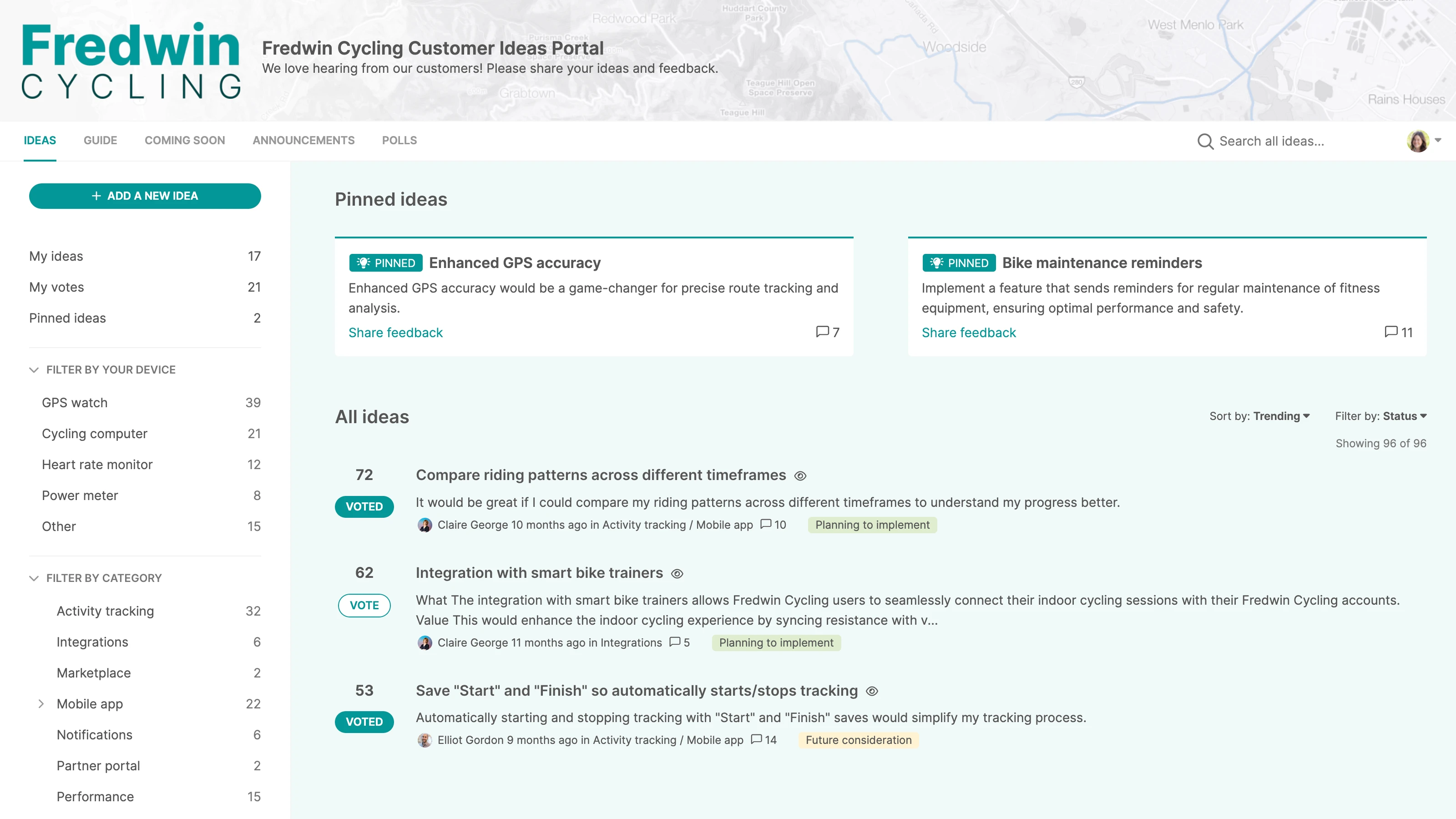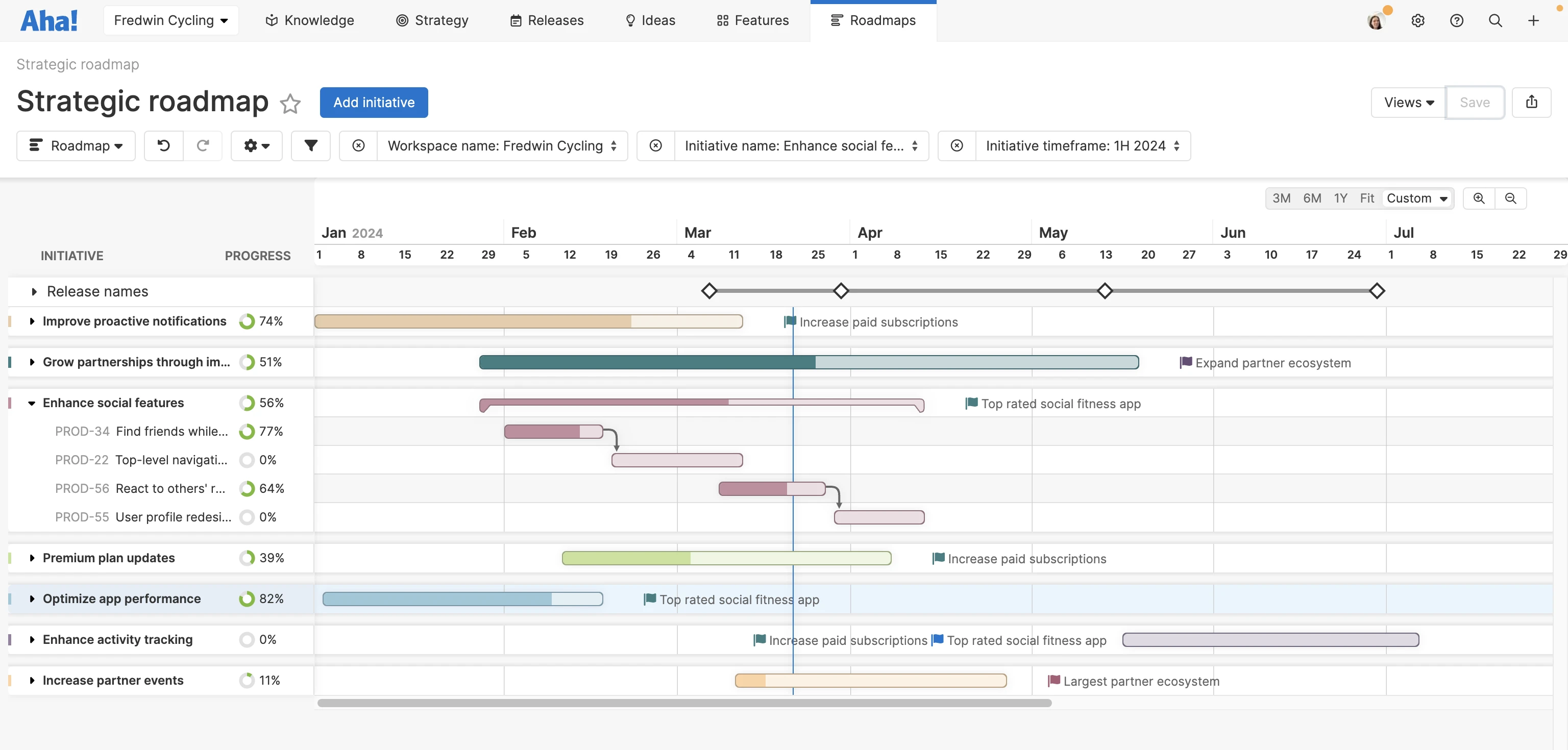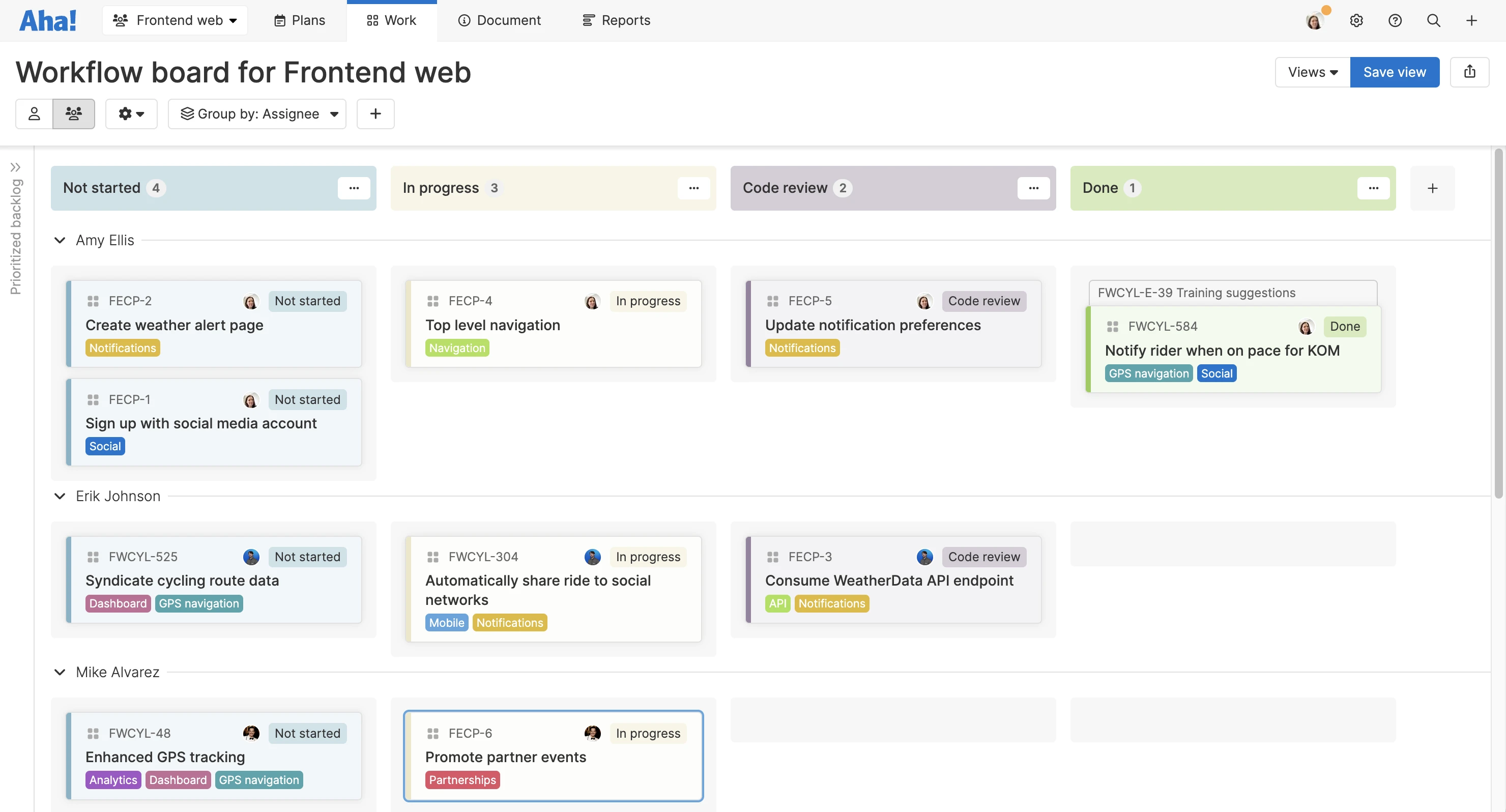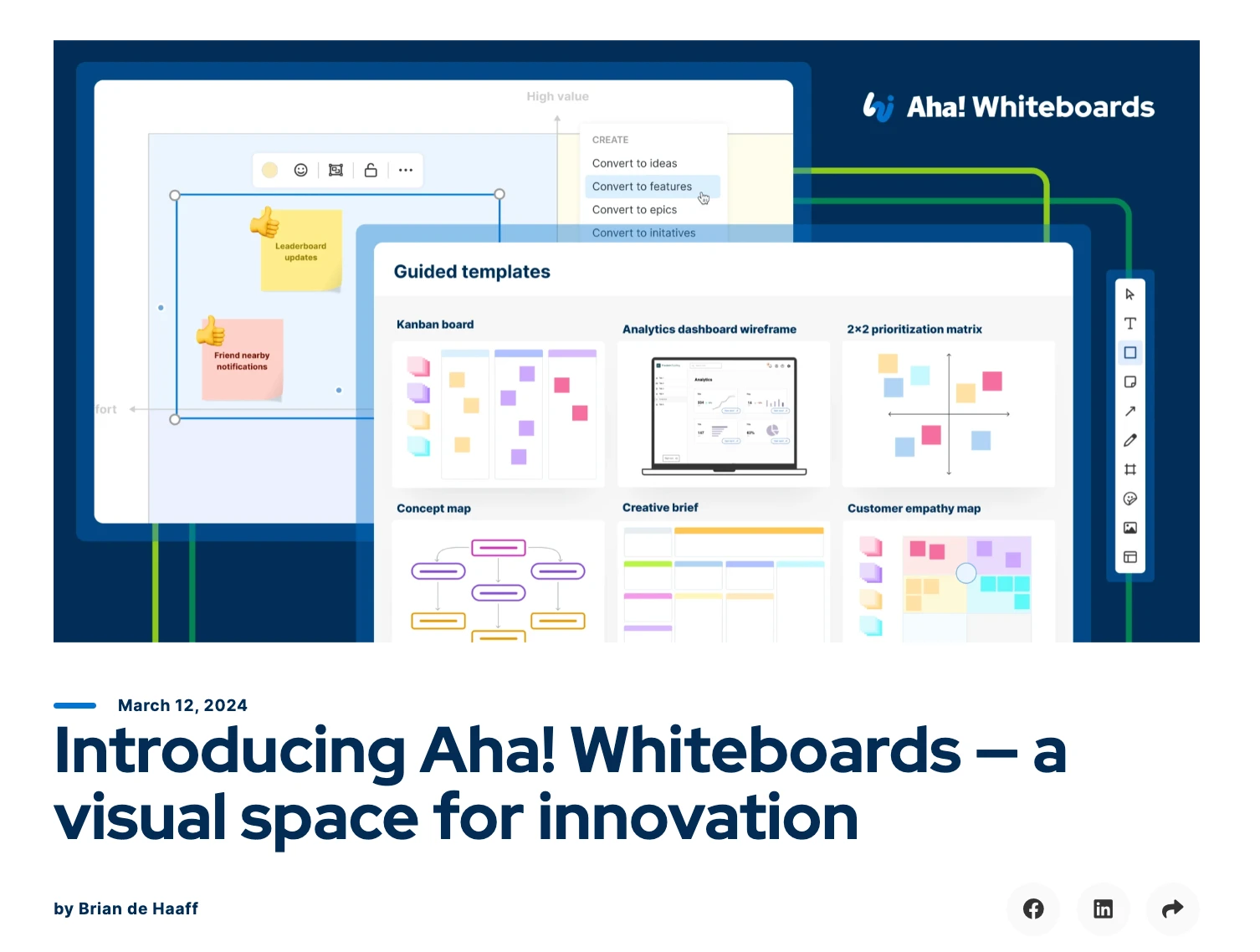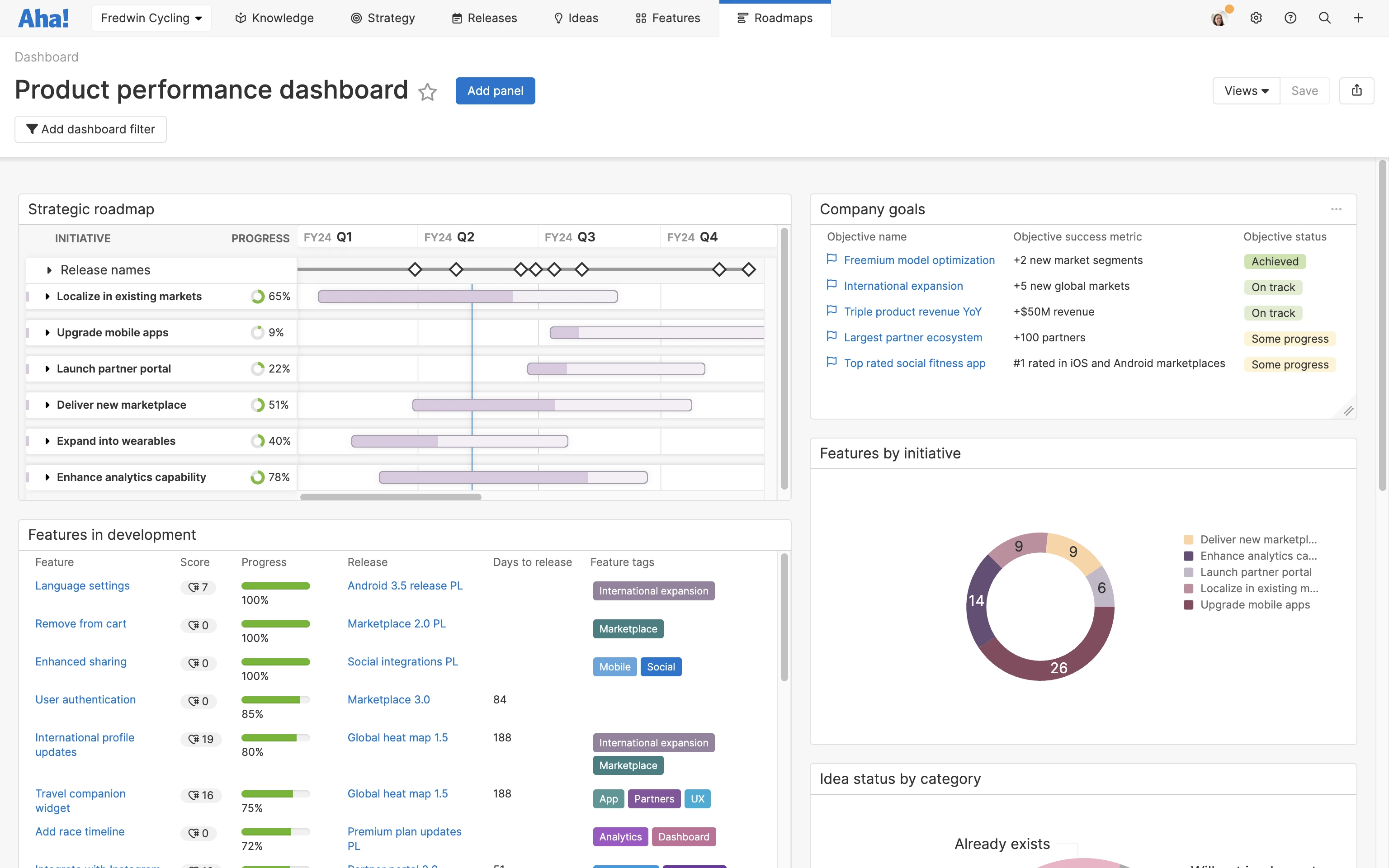Key activities that drive The Aha! Framework
The Aha! Framework explained — your blueprint for building lovable products
Last updated: September 2025
The Aha! Framework is a practical, scalable approach to product development. It guides teams through 10 core stages with repeatable activities to help you align strategy, prioritize customer needs, and deliver lovable products faster. |
The Aha! Framework reflects the way our team approaches product development. It includes a series of discrete activities organized around the 10 core stages of product development.
The Aha! Framework is a flexible approach to product development that can scale to teams of all sizes. You can benefit from our proven method by organizing your product development work around these activities. For teams who use Aha! Roadmaps, we provide a template for The Aha! Framework that you can leverage for maximum efficiency.
Each activity below includes a brief description and a link to relevant guides for further reading, video tutorials, and (where applicable) additional Aha! software templates you can use to accelerate your team's efforts. Even if your organization does not yet use Aha! software, you can reference the materials below and gain inspiration from the templates that you can incorporate into your team's workflow.
If you want to learn more about The Aha! Framework's activities within a specific stage of the product development process, feel free to jump ahead:
What is The Aha! Framework?
The Aha! Framework is based on our team's decades of experience developing products customers love — and supporting fellow product builders who rely on our product development software to do the same. The framework starts with prescribed biannual strategic alignment and supports continuous deployment through ongoing sprints.
Unlike other popular product development methodologies, The Aha! Framework does not include copious ceremonies or unnecessary complexity. Its activities are easy to understand and adapt to your organization's unique needs.
Although presented sequentially here, many of the activities (outside of setting strategy) repeat frequently and concurrently to support continuous deployment. The frequency for each activity is a suggestion for how often you should engage in that activity at a minimum. For example, a "weekly" activity might actually happen several times each week ad hoc as new information emerges and progress happens. Your timing will vary depending on what you are building and how frequently you deliver new customer experiences.
Stage 1: Strategize
Product success hinges on a vision and strategy. The first stage of any product development process is to establish what you want to achieve and the associated goals you need to reach in order to get there. Defining your product strategy is essential work that requires research and deep thought.
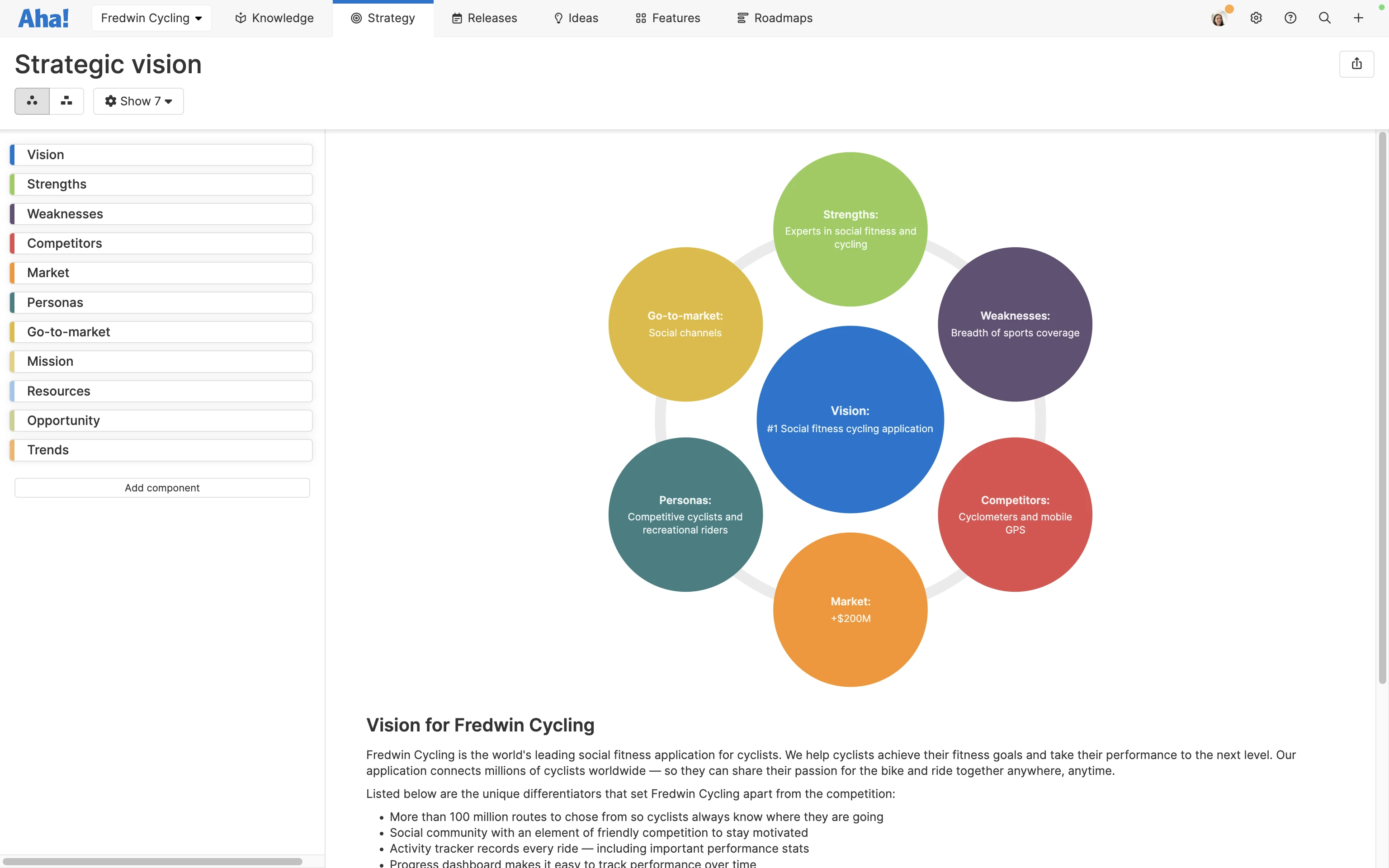
Map out your product's strategic vision so you can tie your work back to high-level goals.
The Aha! Framework prescribes strategic planning twice a year, which includes the following activities:
Define product vision
Frequency: Semiannually
Your product vision outlines the purpose and direction of what you are building. A clear, concise product vision helps the entire organization understand the larger purpose of the product and makes the future more tangible. Solidifying product positioning is also part of this activity.
Further reading:
Aha! templates:
Review market conditions
Frequency: Semiannually
Market shifts can impact your company and product. Survey market conditions and take note of any meaningful movements — positive or negative. Use this information to update your business model, target personas, and competitor profiles. All of this will ultimately inform your product strategy.
Further reading:
Aha! templates:
Draft product goals
Frequency: Semiannually
Company-level goals inform your product planning, so be sure that you have a clear understanding of company strategy before you draft product goals. Consider how product goals will both support company goals and help you achieve your product vision. The final objectives should be ambitious, measurable, and time bound.
Further reading:
Aha! templates:
Identify key product initiatives
Frequency: Semiannually
What will you do to achieve your product goals? Think big picture — capture the major areas of investment or large bodies of work you will pursue. These are your product initiatives, which help you connect the team's work to high-level strategy.
Further reading:
Gather feedback
Frequency: Semiannually
You want to ensure everyone is aligned on the "why" before you jump into the "how." Get input from the people who are invested in your product. Circulate your draft goals and initiatives with leadership and other stakeholders — and be sure to have open conversations and listen deeply (even if you do not agree with what they are saying). These folks will bring a unique perspective and might offer insights you have not yet considered.
Further reading:
Aha! templates:
Set product strategy
Frequency: Semiannually
You know where you are going. So give the team the true north it needs to realize the product vision. Formalize product goals and initiatives, then share them with the team and explain how they support the product vision as well as overarching company goals. Make other strategy artifacts available (such as product positioning) to help everyone internalize the way forward.
Further reading:
Aha! templates:
Stage 2: Discover
By deeply understanding what customers need, you can begin to create an offering they love. Conducting customer interviews is a key part of product discovery — you are engaging directly with end users to uncover valuable product insights. Then you add the most compelling insights to your product roadmap, so that what the team builds is aligned with actual user feedback. (While we consider this the second stage of product development, product discovery is really an ongoing process that allows teams to pivot based on evolving customer needs.)




